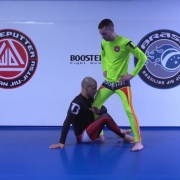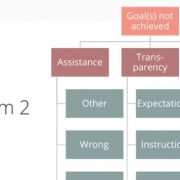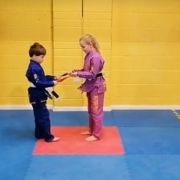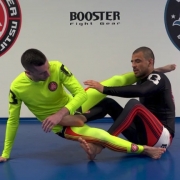Teaching Principles Series: “Animals for Kids” (5:20)
Kids relate to animals, even from a young age kids will have the ability to impersonate various animals. When kids use their imagination and try to really embody a particular animal it allows them to move in ways that are natural and easy.
I have noticed that using animal movements is a great way to warm for classes, sometimes in a prescribed movement way and other times in a creative “free choice” sort of a way.
The concept that I am outlining in this video is that you can use many different animals to teach a particular technique and you can even be creative in choosing a characteristic of animal that you would like the kids to emulate in doing a technique. Examples of characteristics that a particular animal may have that maybe relevant could be:
- Speed (like a cheetah or a snake strike)
- Power (like the explosion of a lion pounce or the swing of a bear paw)
- Sneakiness (like a lion creeping up or a snake slowly moving)
- Squeezing (like an anaconda or like a crocodile jaws)
- Long limbs (like a gorilla)
- Charging (like a rhino)
- Low to the ground (like a crocodile or a lizard)
The above list is not exhaustive, you can use any characteristic you like and within reason you can apply most characteristics to most animals. As an example I will list below some that I have used recently.
- Gorilla (moving to one side on knuckles and feet to build a basic Bull Fighter guard pass)
- Lizard (using the forward low motion to generate pressure in Side Control)
- Crocodile (low forward pressure to help kids do a Smash Pass)
- Snake (moving slowly and mesmerizingly and then suddenly striking to teach a Double Leg entry)
- For Guard Retention I tend to use three animals: Turtle, Wombat and Octopus
The list is endless, and is only limited by your creativity.
In this video I am going to use a recent example of teaching a Low Single Leg and a Low Double Leg with the visualisation of a Cheetah and a Lion. This is a re-enactment of the class in which I let the kids choose four animals for their warm ups and then selected Cheetah and Lion from their choices to build the lesson. The lesson involves a progression from a simple movement based on the animal, through to the complete technique. The lessons are taught with less focus on the technical skill and more relation to the animal movement in a fun environment.
It helps if you get the kids to roar when attacking like a lion……








